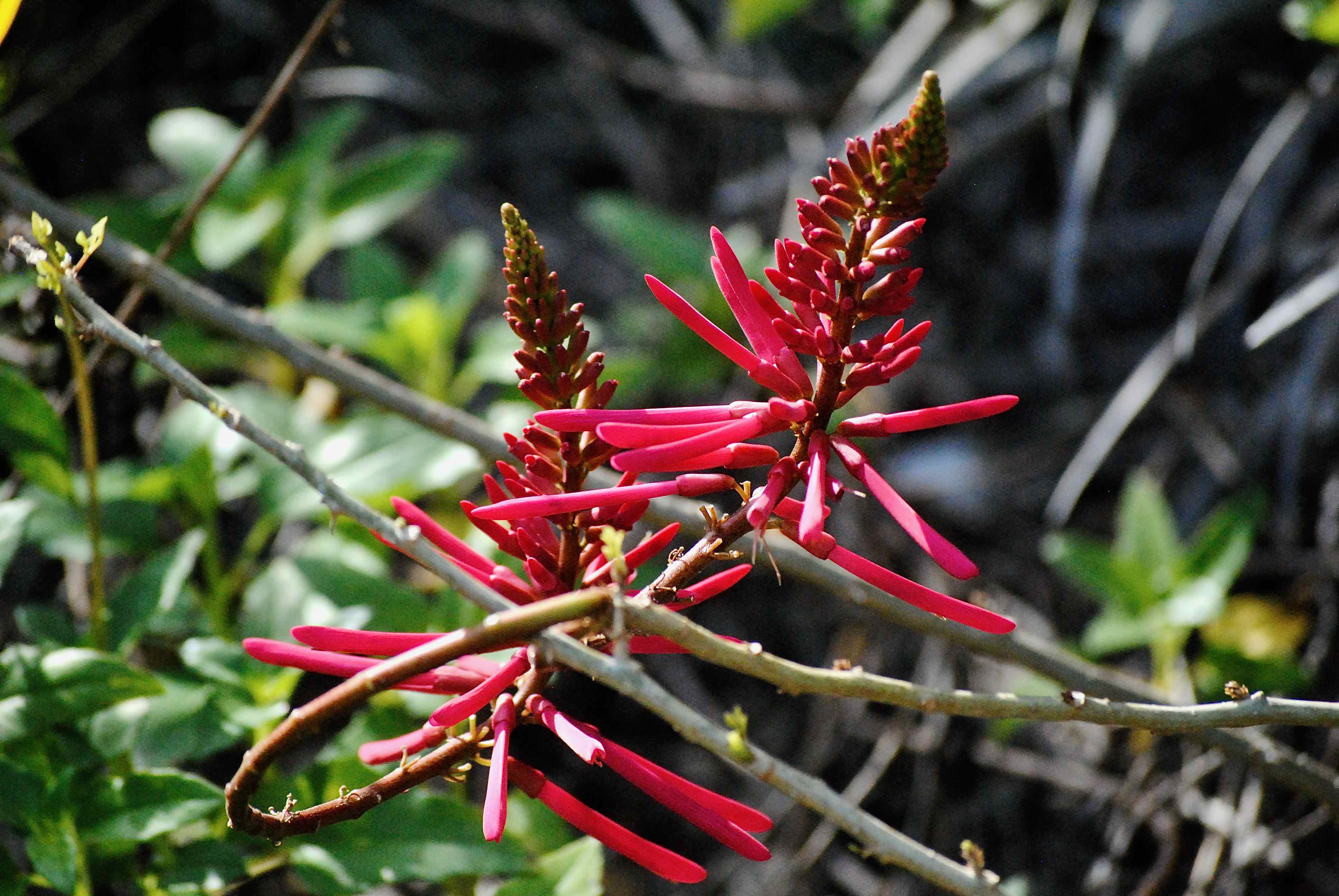
Coral bean, photographed at Juno Dunes Natural Area, Oceanfront Tract, Juno Beach, Palm Beach County, in March 2014.
With a name like coral bean, Erythrina herbacea, you get the impression that this is a plant to be found near the beach. But the name is a little deceptive.
Coral bean is somewhat salt-tolerant and it grows well in coastal areas. In fact, we found the plants on this page growing in coastal areas. But then you look at the distribution maps for coral bean and you see that its range includes Oklahoma and Arkansas, places that are strangers to blue water, as the song goes.
So much for the beach theory. In any case, coral bean is a Florida native found in most of the state's 67 counties. It's native range extends throughout the southeastern United States as far north as North Carolina. Depending on where it grows, coral bean can be anything from a subshrub to a small tree. Typically, it reaches perhaps six feet tall, but in South Florida, it can hit 30 feet or more. According to the Institute for Regional, it tends to be more prevalent and bigger on South Florida's Gulf Coast than on the Atlantic.
It is a perennial, but in northern portions of its range, coral bean will die back to the ground each winter, re-emerging come spring. In places to the south, it is deciduous, dropping leaves in winter. The leave are compound, comprised of three arrowhead-shaped leaflets, and arranged alternately on the stem. The shape is distinctive enough to make coral bean an easy ID anytime of the year.
The tubular flowers are arranged on spikes that can be as long as a foot. In South Florida, the flowers will appear year round, but peaking in winter and spring. The fruit is a segmented pod filled with bright red seeds.
The bark is white and rough; the branches tend to be woody toward the bottom of the plant and herbaceous, or soft, farther up. The branches are also armed with curved thorns. Typical habitats include thickets and the edges of forests. It likes full sun or partial shade. It is cultivated, used in landscaping as an accent plant or as a buffer.
The flowers, are sources of nectar for hummingbirds and butterflies, while the rest of the plant provides cover for birds and other animals. The seeds are poisonous, however. They're used in making jewelry and novelties, but care should be taken to keep them out of the hands of children. Fun fact: according to the Florida Native Plant Society, Mexicans use the seeds for rat poison. According to the FNPS, native Americans used other parts of the plant for medicine. Eat the Weeds author Deane Green says the flowers are edible.
The first part of coral bean's scientific name, Erythrina, comes from the Greek meaning red-colored; the second word is Latin meaning grassy, not woody. There are 13 members of the Erythrina family in the United States; coral bean is the only one found in Florida.
Other names and spellings for coral bean include coralbean, Cherokee bean, cardinal spear and redcardinal. It is a member of Fabaceae, the pea family.
Juno Dunes Natural Area, Oceanfront Tract
Click on photo for larger image
U.S. Department of Agriculture Distribution Maps






